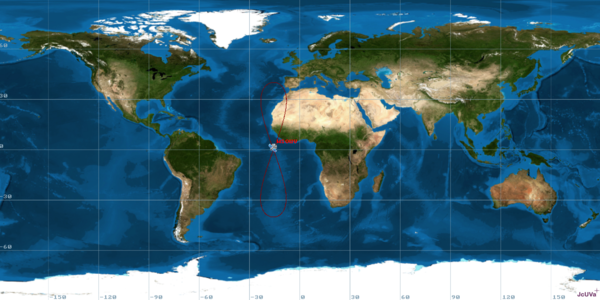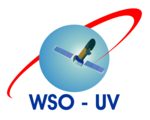Overview
The considerable scientific success of the International Ultraviolet Explorer satellite (IUE) observatory and successor instruments such as the Goddard High Resolution Spectrograph (GHRS) and Space Telescope Imaging Spectrograph (STIS) spectrographs on-board Hubble Space Telescope (HST) amply demonstrate the importance of the far ultraviolet wavelength range, from ~100 to 300nm, to modern astronomy. Of particular importance has been access to high resolution R~40,000-100,000 echelle spectra providing an ability to study the dynamics of hot plasma and separate multiple stellar and interstellar absorption components.
However, there are a few emerging problems with this provision. First, since HST has UV, optical and infra-red capabilities, the available observing time is divided across these bands. In addition, the total observing time is oversubscribed by a factor ~10. Hence demand for access to UV observations far outstrips what is available from HST. Secondly, the STIS instrument is already operating on the redundant electronic systems and the instrument will not be serviced. Therefore, it is necessary to plan for a replacement of this high resolution UV capability.
The World Space Observatory - Ultraviolet (Spektr-UF / WSO-UV) is the proposed solution to the problem of future access to high resolution far-UV spectroscopy. The planned instrument sensitivity will exceed that of HST/STIS by a factor 5-10, but all the observing time will be available for UV astronomy. The present mission design consists of a 1.7-meter telescope. The focal plane instruments consist of UV spectrometers covering the spectral band from Lyman alpha to the atmospheric cut-off with R~55,000 and offering long-slit capability over the same band with R~1,000.
In addition, it is expected a number of UV and optical imagers view adjacent fields to that sampled by the spectrometers. The imaging performance compares well with that of Advanced Camera for Surveys (ACS) of HST while the spectral capabilities are comparable to the HST/STIS echelle modes. However, with a smaller number of instruments in the focal plane, compared to HST, the required number of optical elements in each subsystem is reduced. Hence, the WSO delivers considerably enhanced effective area. This throughput is similar to that offered by the Cosmic Origins Spectrograph (COS) at the longer wavelengths, but COS has an inferior spectral resolution (R~24,000 max).
Spektr-UF / WSO-UV is ideally placed to provide follow-up studies of the large number of UV sources expected from the GALEX sky survey.
Key facts
A telescope 1.7m diameter-class (the T170M) and a unified Service Module NAVIGATOR (intended for fulfilment of projects Electro, Spectrum-R, Spectrum-UV, that is WSO-UV, Spectrum-RG).
The most important characteristics of the Spektr-UF / WSO-UV are compiled here:
- Long continuous target visibility.
- Small Pollution from Earth atmosphere. The FCU will be the first UV imager flown in a geosynchronous orbit, above the Earth geocorona.
- Simultaneous operation of WUVS and FCU is feasible.
- High sensitivity, with a total mirror geometric effective area of 2.27m2.
- Guiding stability of 0.1 arcsec at 3s.
- Spectral dispersion as high as D=50,000 in the full 115-315 nm range with the WUVS instrument.
Orbit
An Angara A5 launcher will launch the Spektr-UF / WSO-UV, aiming for a final geosynchronous orbit (GSO). The ground track will have the shape of a more or less distorted figure-eight, returning to the same places once per sidereal day. This keep the satellite in view of its assigned ground stations and receivers, appearing to oscillate in the sky from the viewpoint of a ground station, tracing an analemma in the sky.


Viewing Constraints
The visibility of the sources in the sky depends on several constraints:
- Solar avoidance because of Spektr-UF / WSO-UV design.
- Earth limb avoidance, to prevent the penetration of Earth scattered solar radiation into the telescope tube.

Pointing Performance and Fine Guidance Sensors
Pointing and tracking will be performed on guide stars using the dedicated FGS (see Figure 5). In normal operation, a combination of any two sensors is used, which makes it possible to measure the deviation of the axis from the direction of sight with the required accuracy.
- The distance of each detector to the optical axis is 60 mm.
- The operating wavelength range is from 400nm - 800nm.
- Each CCD detector size is 1024x1024 pixel with a pixel size of 16um with a quantization depth of 12bit.
- The FoV is 3x3 arcmin and the IFoV of one pixel is 0.19x0.19 arcsec
The standard Spektr-UF / WSO-UV observing mode is a 3-axis stabilized pointing at the selected target. This enables observations for a period of up to several hours.
The spacecraft will be able to rotate around every axis, allowing to orientate the instruments arbitrarily on the sky and to align scans and maps with respect to celestial coordinates.
The pointing accuracy is 0.1 arcsec and the stabilization accuracy 0.1 arcsec at 3σ level.The performance of the Guiding System (SDG) is shown in the table below.

Therefore, for each observing target must be at least one valid guide star in the FoV of the FGS with R magnitude smaller than 16 mag.

